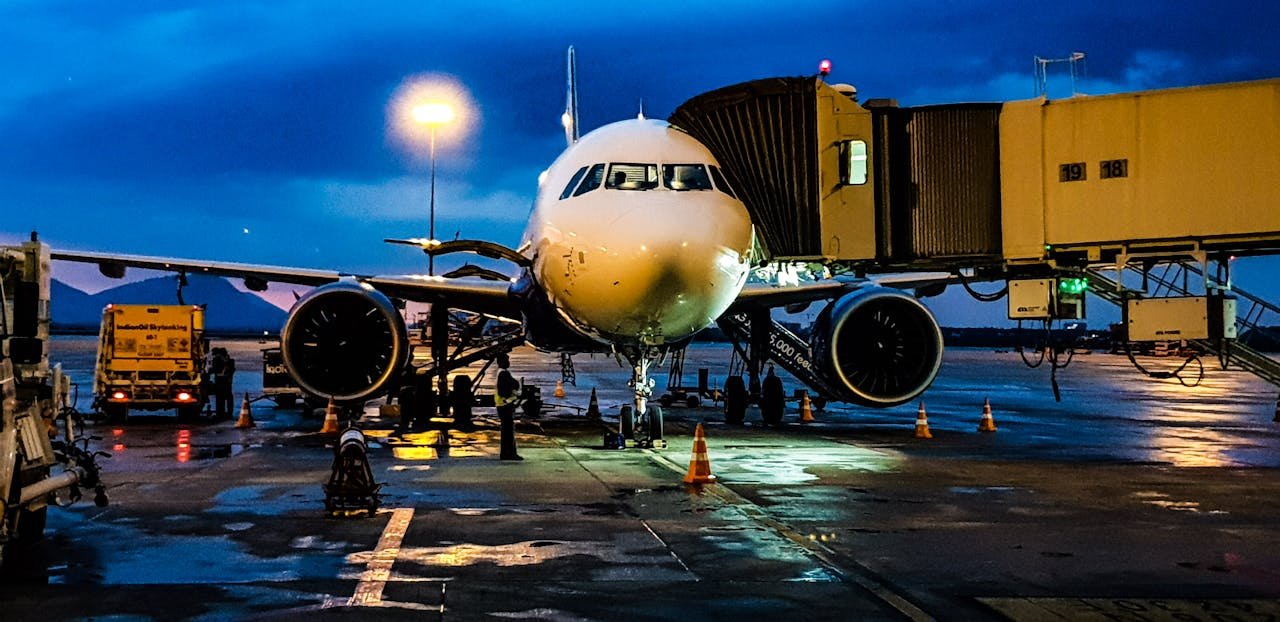Modern aircraft rely on reliable equipment to keep every flight safe and efficient. Advanced electronics and precision components can improve control accuracy and reduce pilot workload during each stage of operation. Many innovations help monitor systems, guide navigation routes, and communicate with ground support without delay. Busy schedules often demand clear data and rapid adjustments under changing conditions. Simple designs that combine powerful computing and sturdy materials can deliver dependable performance and maintain high standards for safety and fuel use.
Advanced Navigation Systems
Modern navigation systems can guide aircraft along precise flight paths even when weather conditions become challenging at high altitude. Satellite-based receivers can calculate positions by measuring signals from multiple orbiting satellites to maintain route accuracy during long cruises. Cockpit displays can show clear route maps and altitude data in simple layouts that pilots can read without confusion during busy operations. Integrated inertial sensors may track movement continuously to fill gaps when satellite signals suffer temporary loss over remote regions. Continuous updates can reduce course deviations and help avoid unnecessary detours that may increase fuel consumption and flight time. Innovations in navigation can support direct routing that leads to faster travel and lower emissions.
Collision Avoidance Technology
The collision avoidance technology has the capability of observing the positions of other aircraft around the one and detecting the imminence of collision. Relative altitude and distances can also be measured by countries communicating to gauge on any conflicts in congested airspace. Cockpit warnings can display clear icons and audible alerts that pilots can recognize immediately without distraction from core tasks. These aircraft parts can detect potential threats and generate simple instructions that allow pilots to adjust flight paths quickly to maintain safe separation. Continuous scanning can reduce the risk that may arise from blind spots or rapid maneuvers in busy corridors. Automated tracking can support proactive adjustments that help maintain a safe buffer around the aircraft.
Modern Flight Management Units
Flight management units can integrate navigation, performance, and guidance functions into a central operating system that runs on reliable processors. Systems can calculate optimal routes by factoring wind data, altitude restrictions, and weight distribution to optimize fuel efficiency during each phase of flight. Cockpit interfaces can show planned legs and allow prompt modifications that help pilots update departure or arrival procedures without manual calculations. Real-time performance updates can estimate fuel burn and arrival times to help crew members make informed decisions about speed adjustments. Highly automated interfaces can reduce pilot workload and support consistent procedures that improve safety margins during critical flight phases. Technology can deliver precise guidance that usually leads to smoother operations and lower operating costs.
Efficient Communication Links
The contemporary datalink communication allows locking cockpit crews to air traffic control and ground support without having to base solely off voice radio, where they communicate using secure digital links. The system can transmit text-based clearance, weather information, etc., to the onboard displays to avoid misunderstanding that may result from heavy traffic on the radio. Simple message formatting can help crews process incoming information quickly and execute instructions accurately under time constraints. Redundant communication paths may use satellite and terrestrial networks to maintain a connection when primary channels suffer interference over remote regions. Reliable voice systems can deliver clear audio signals that reduce misread and replay scenarios that may add delay to responses. Improved communication can help coordinate logistics and safety actions across all flight phases and basically support smoother coordination.
Reliable Engine Monitoring Sensors
Engine monitoring sensors can simply gather data on temperature, pressure, and vibration levels inside critical components to detect anomalies before faults become severe. Advanced probe arrays can sample airflow and combustion conditions continuously to track performance changes as engines run under varying loads. Onboard computing units may analyze sensor outputs in real time to flag deviations that fall outside approved ranges and prompt maintenance crew interventions as needed. Alerts can display on cockpit panels and ground station screens with obvious status lights that allow engineers to schedule inspections ahead of time and plan ahead instead of waiting until it’s the last minute. Integrated diagnostics can capture historical trends that enable the prediction of future maintenance needs and may even eliminate planned downtime. Efficient sensor networks can support safer operations by ensuring engines run within optimal limits during each flight.
Conclusion
Modern avionics and durable parts can deliver safer and more efficient flights by combining advanced technology with practical designs. Many systems can monitor, guide, and protect aircraft through every phase of flight with clear information and proactive alerts. Modern materials and sensors can keep components in optimal condition while reducing weight and fuel consumption. Overall improvements can support reliable operations and ongoing enhancements across the aviation industry.
Refresh Date: August 22, 2025



